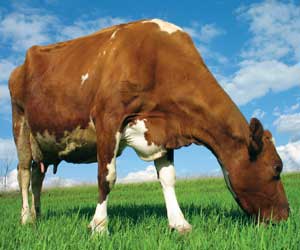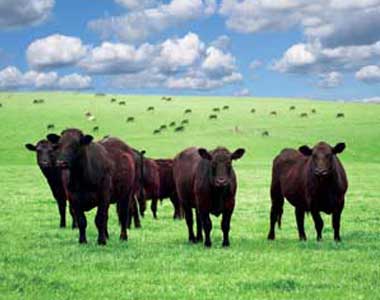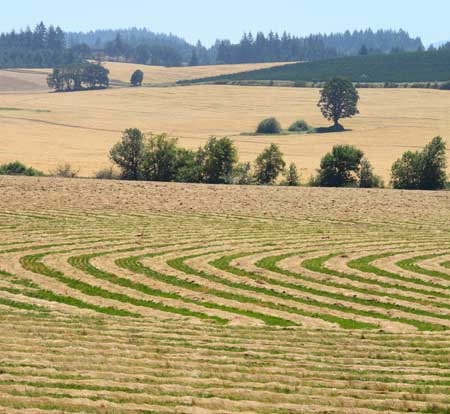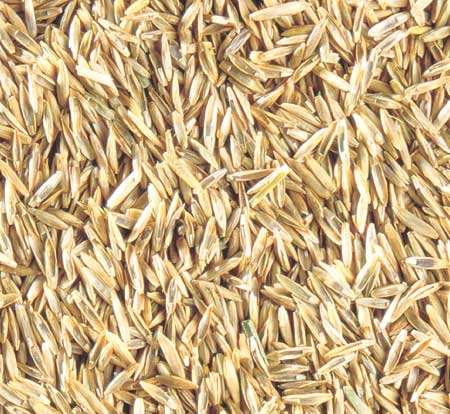Perennial ryegrass is more persistent than annual ryegrass but less persistent than tall fescue. It tillers more profusely than annual ryegrass but is lower growing and will not form a seedhead in the establishment year. There are diploid (two sets of chromosomes) and tetraploid (four sets of chromosomes) varieties of perennial ryegrass. Tetraploids have longer tillers, longer seedheads and wider leaves. Tetraploid varieties tend to be taller and less dense. Because they have a more open sod (less ground cover) they are better suited to be grown in mixtures with legumes. Tetraploids are more digestible, have more soluble sugars and generally perform better than diploids during grazing. However, diploid types are usually more persistent and more tolerant of heavy grazing.
Adaptation and Use
Perennial ryegrass is popular in many turf situations because it germinates rapidly, establishes quickly and has aesthetic appeal. However, its use for forage has been limited by temperature extremes. Since the species is primarily adapted to temperate climates, it historically has not been productive and/or persistent during cold winters in the North or hot summers in the Lower South. Advances in variety development have expanded its use beyond its historical adaptation area and with continued breeding efforts its zone of adaptation will likely continue to expand in the future. At present approximately 250,000 acres are grown in the USA. Perennial ryegrass has the potential to produce high yields of excellent quality forage and can be used for pasture, hay, silage, turf and conservation purposes. It is easy to establish and can be grown in mixtures with legumes such as alfalfa, white clover and red clover.
Establishment
Perennial ryegrass can survive in a wide range of soil and climatic conditions; however, it grows best on well-drained, fertile soils. The first and most important agronomic and economic investment in ryegrass production is a soil test. Phosphorus and potassium should be in the medium range and the soil pH should be between 6.2 and 6.8 for optimum production and persistence. When seeded with legumes, nitrogen is not required. In pure stands, add 40-60 pounds of N per acre depending on planting date and expected growth during late fall and winter. For late-winter early-spring seeding, use 50-60 pounds of N per acre.
Use high quality seed of a variety capable of producing and persisting in your area. Many states conduct variety tests that provide information about which varieties have performed well in a given area.
Depending on location, seedings can be made from early August through October. Earlier plantings are best for fall and early winter grazing possibilities. Plantings can also be made from March to early May. Seedings can be made into prepared seedbeds or no-tilled into killed sods or crop residues. When seeding into a prepared seedbed, use of a cultipacker-seeder or broadcasting seed followed by cultipacking has been very successful. Regardless of seeding method, seed should be planted at the optimum rate and placed at a depth of ¼-½ inch in good seed-to-soil contact. Reduce seeding rate when seeding with a legume. Monitor a new stand and control any troublesome weeds and insects during establishment.





